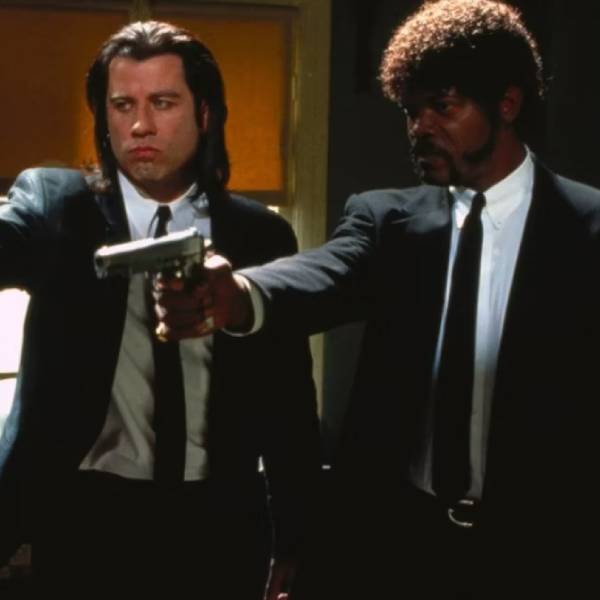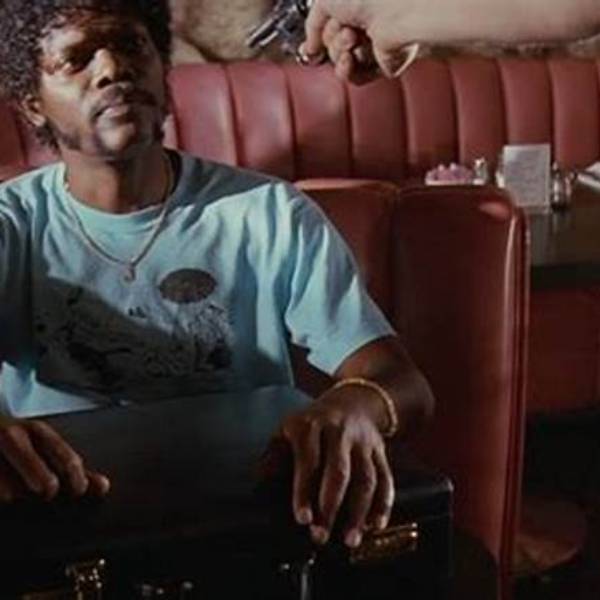Understanding What is in the Briefcase in Pulp Fiction
The briefcase in “Pulp Fiction” has captivated audiences since the film debuted in 1994. Quentin Tarantino, the director, created a complex and engaging narrative that left many questions unanswered. One persistent question revolves around the enigmatic contents of this briefcase. It appears at crucial moments, influencing the story indirectly and directly. The glowing interior has led to numerous theories, each more imaginative than the last. This element of mystery gives the film its unique flavor, attracting both casual viewers and film scholars alike. These discussions continue, ensuring the film’s lasting relevance and fascination.

Theories and Speculations
Many theories have emerged about what’s inside the briefcase, often rooted in symbolism. Some fans believe it contains the soul of Marsellus Wallace, referencing a biblical motif. Others think it holds stolen gold or jewels, hearkening to classic crime films. Tarantino himself has remained tight-lipped, preferring ambiguity over clarity. This has only fueled more speculation, encouraging viewers to search for hidden meanings. Critics argue that the briefcase serves as a MacGuffin, a plot device that drives the characters’ actions but holds no real significance. Whether it holds hidden depths or not, it certainly adds layers to the film’s narrative complexity.
The Briefcase as a Cultural Icon
The briefcase’s cultural impact goes beyond the screen, influencing other films and media. Object yet absorbs all attention. It has inspired parodies, homages, and merchandising, cementing its place in pop culture. Its mystery makes us think about what we value and why we assign importance to certain objects. Tarantino’s choice to leave its contents unrevealed keeps audiences engaged, as their imaginations fill in the blanks. The decision to keep the briefcase a mystery demonstrates the power of storytelling. This open-ended question draws people into the world of “Pulp Fiction” again and again.
Popular Theories: What is in the Briefcase in Pulp Fiction
One popular theory claims that Marsellus Wallace’s soul resides in the briefcase. This idea draws fans who notice the combination code, 666. They link this number to the devil and soul-selling. When characters open the briefcase, the golden glow captivates them. This glow suggests something otherworldly, leading many to ponder deeper implications. Every time characters peer inside, awe and fear consume them. Supporters say Marsellus sold his soul for power and is now trying to reclaim it. The briefcase thus becomes symbolic of his desperation. This theory elevates Marsellus as more than a gangster. He becomes a tragic figure seeking redemption.
Treasure of Gold and Wealth
Another theory proposes that the briefcase holds gold or treasure. Characters react with reverence, hinting at immense value and rarity. They never explicitly reveal its contents, heightening mystery. The golden glow can easily symbolize wealth. Pulp Fiction, being steeped in crime lore, makes this plausible. Gold represents tangible, universal wealth. The briefcase may thus signify the ultimate criminal score. Every criminal dreams of such a treasure. This aligns with the film’s dark, materialistic themes. The characters’ readiness to kill for the briefcase supports this. Treasure, in many stories, leads to greed and betrayal. This theory stresses material wealth’s ability to corrupt.
The Appeal of Mystery
These theories enrich the film’s narrative complexity. They prompt fans to view the film repeatedly for deeper analysis. Mystery often drives audience engagement. Quentin Tarantino, known for layered storytelling, likely wanted this. The briefcase’s unknown contents keep viewers guessing. Whether it holds a soul or treasure, it is crucial. This ambiguity makes the suitcase a central character. It pulls various storylines together with a unified but mysterious purpose. Speculation persists because both theories hold weight. This invites viewers into participatory storytelling. They become detectives, piecing clues together. Such open-ended elements ensure Pulp Fiction’s enduring appeal. Fans dissect it, ensuring its place in cinematic history.
Symbolism and What is in the Briefcase in Pulp Fiction
The question “what is in the briefcase in Pulp Fiction” also opens up discussions on symbolism. In many respects, the briefcase represents the concept of desire and the lengths to which people will go to achieve it. The glowing light symbolizes allure, mystery, and ultimately, human greed.
From this perspective, the briefcase serves more as a plot device and a symbol rather than a literal object with contents. Its ambiguity is deliberate, encouraging viewers to interpret its meaning within the context of the film’s broader themes of redemption, power, and morality.

The Filmmaker’s Perspective: What is in the Briefcase in Pulp Fiction
Quentin Tarantino himself has remained tight-lipped about “what is in the briefcase in Pulp Fiction,” adding to its enigmatic status. Tarantino has suggested that the contents are intentionally left ambiguous to allow audiences to project their interpretations onto it.
This open-ended approach aligns with postmodern narrative techniques, where unresolved mysteries compel viewers to engage more deeply with the material. By providing no definitive answer, Tarantino turns the briefcase into a narrative device that transcends the need for resolution, making it a lasting point of fascination. Just like used women’s handbags can hold countless secrets, the briefcase in Pulp Fiction embodies unresolved mysteries. Tarantino’s open-ended approach keeps viewers engrossed, seeking meanings beyond clear resolution.
Impact on Pop Culture: What is in the Briefcase in Pulp Fiction
The mystery of “what is in the briefcase in Pulp Fiction” has had a significant impact on pop culture, influencing films, television shows, and even music videos. Various media have paid homage to the briefcase, often featuring similar enigmatic objects as a nod to Tarantino’s work.
This cultural impact underscores the power of unanswered questions in storytelling. The briefcase has become a symbol of the film’s enduring legacy, continually inviting new audiences to engage with its mystery. Its presence in popular discourse attests to the artistry and impact of Tarantino’s narrative choices. The briefcase in Pulp Fiction highlights the film’s lasting cultural impact and invites ongoing discussion. Its mystery showcases Tarantino’s narrative brilliance and keeps audiences engaged over time.

Personal Interpretations: What is in the Briefcase in Pulp Fiction
Ultimately, the question “what is in the briefcase in Pulp Fiction” is a personal one, with each viewer bringing their interpretations. For some, the briefcase represents ultimate temptation or moral ambiguity, reflecting the film’s darker themes. For others, it may symbolize hope or redemption, seen in the reactions of characters who encounter its glow.
The beauty of this narrative device lies in its ability to mean different things to different people. By engaging with the mystery, viewers invest more in the story and its characters, finding their answers to one of cinema’s most enduring questions. This narrative device in Pulp Fiction allows for personal interpretation, making the film deeply engaging. Viewers find unique meanings, ensuring the film’s lasting intrigue and appeal.
In conclusion, the question “what is in the briefcase in Pulp Fiction” is a multifaceted mystery that enriches the film’s narrative complexity. Through popular theories, symbolic meanings, the filmmaker’s perspective, and cultural impact, the briefcase transcends its role as a mere prop. It invites viewers to ponder deeper themes of desire, morality, and human nature, each arriving at their interpretations. This open-ended mystery exemplifies Quentin Tarantino’s mastery of storytelling, ensuring that “Pulp Fiction” remains a subject of intrigue and admiration for generations to come.
